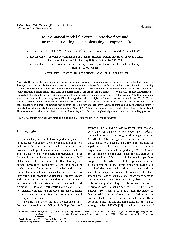摘要
Based on the momentum and mass conservation equations, a comprehensive model of heap bioleaching process is developed to investigate the interaction between chemical reactions, solution flow, gas flow, and solute transport within the leaching system. The governing equations are solved numerically using the COMSOL Multiphysics software for the coupled reactive flow and solute transport at micro-scale, meso-scale and macro-scale levels. At or near the surface of ore particle, the acid concentration is relatively higher than that in the central area, while the concentration gradient decreases after 72 d of leaching. The flow simulation between ore particles by combining X-ray CT technology shows that the highest velocity in narrow pore reaches 0.375 m/s. The air velocity within the dump shows that the velocity near the top and side surface is relatively high, which leads to the high oxygen concentration in that area. The coupled heat transfer and liquid flow process shows that the solution can act as an effective remover from the heap, dropping the highest temperature from 60 to 38 A degrees C. The reagent transfer coupled with solution flow is also analyzed. The results obtained allow us to obtain a better understanding of the fundamental physical phenomenon of the bioleaching process.
- 出版日期2011-10
- 单位北京科技大学
